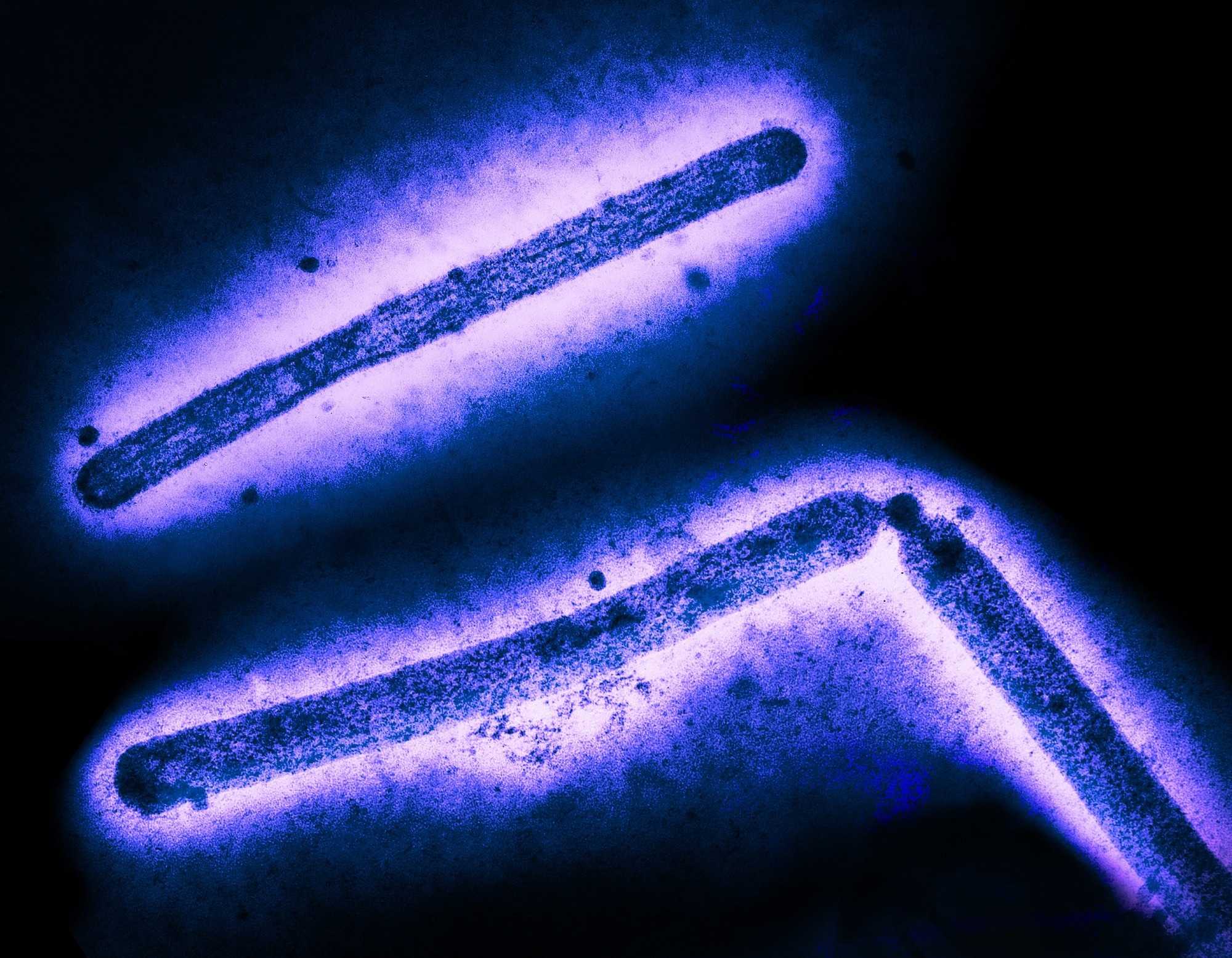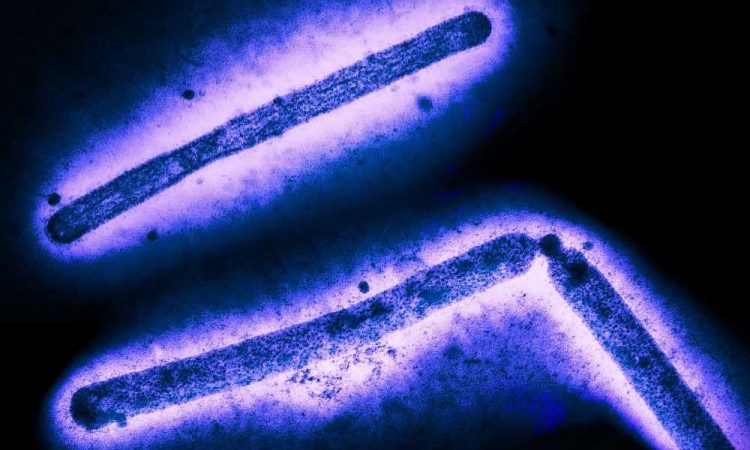In a recent study published in the journal Nature Communications, researchers examined the phenotypic and genetic evolution of clade 2.3.4.4b highly pathogenic avian influenza A(H5N1) viruses following their spread to North America (NAm).
Clade 2.3.4.4b A(H5N1) viruses spread rapidly over Africa, Europe, and Asia in 2021, infecting domestic animals and wild birds. Viruses of the same clade were discovered in North American regions towards the end of 2021, indicating continued transcontinental expansion. Their zoonotic transmission potential, reassortment, and increase in virulence of the viruses and human infections are concerning.
 Study: Rapid evolution of A(H5N1) influenza viruses after intercontinental spread to North America. Image Credit: CDC and NIAID
Study: Rapid evolution of A(H5N1) influenza viruses after intercontinental spread to North America. Image Credit: CDC and NIAID
About the study
In the present study, researchers reported on the rapid evolution of A(H5N1) influenza viruses after their intercontinental spread to North America.
The transmission dynamics and pathogenicity of two A(H5N1) wild bird viruses, A/American wigeon/South Carolina/22-000345-001/2021 (Wigeon/SC/21) collected in December 2021 and the A/bald eagle/Florida/W22-134-OP/2022 obtained in February 2022, were determined. Ferrets and white leghorn chicken were used to evaluate A(H5N1) virus transmission. Genotypic and antigenic analyses of clade 2.3.4.4b viruses were performed, and other viruses of the same clade were pathotyped among ferrets.
To assess virulence, nasal wash titers were determined and expressed as median tissue culture infectious dose (TCID50/ml), followed by histopathological examination of ferrets' upper respiratory tract, lower respiratory tract, and extrapulmonary tissues. Further, BALB/c mice were inoculated with the viruses to investigate whether the virulence and pathogenicity among ferrets were mirrored in other influenza mammalian models. Median lethal (LD50) doses were determined to assess viral lethality. Syncytium assays were performed to detect the pH of hemagglutinin (HA) activation, and reporter gene assays were performed to assess viral polymerase gene activities.
Undifferentiated human airway epithelial cells (Calu-3) and primary differentiated human airway cultures were used to evaluate replication kinetics. Sera were obtained from 48 individuals aged between 18.0 and 46.0 years to measure influenza virus neuraminidase (NA) protein-targeted cross-protective antibodies using enzyme-linked lectin assays (ELLA). Antiviral susceptibility of clade 2.3.4.4b viruses was determined using NA inhibitors (NAIs), zanamivir and oseltamivir, and an active metabolite of the endonuclease inhibitor baloxavir marboxil, baloxavir acid (BXA).
Results
Minimal bird-mammal transmission of the viruses was observed. Among ferrets, Wigeon/SC/21 and Eagle/FL/22 inoculations resulted in mild and severe infections, respectively, as evidenced by more significant mean titers in nasal washes of Eagle/FL/22 at one, three-, and five days post-infection (dpi). The western movement of the 2.3.4.4b clade was quickly followed by reassortment events in NAm wild avian influenza viruses and H5 2.3.4.4b viral organisms after A(H5N1) virus introduction into North America, resulting in the acquisition of differing ribonucleoprotein gene combinations.
For example, Eagle/FL/22 developed North American wild avian nucleoprotein (NP), and polymerase basic (PB)-1 and 2 genes after reassortment. Four viral genotypes were detected among the sequenced 58.0 A(H5N1) influenza viruses. All viruses contained the NA, HA, non-structural (NS), and matrix (M) gene segments of Eurasian (EA) origin but possessed different Nam- or EA-origin NP and polymerase gene combinations. In most cases, monophyletic NAm segments were observed, indicating minimal reassortment, with the geographical spread of the resultant viruses.
NAm-strain A(H5N1) virus proteins showed no markers related to virulence among mammals, and all were antigenically homogeneous. The additional viruses pathotyped were A/Red-shouldered Hawk/ North Carolina/W22-121/2022 (Hawk/NC/22); A/Fancy Chicken/Newfoundland/FAV-0033/2021 (Ck/NL/21); A/Bald eagle/North Carolina/W22-140/2022 (Eagle/NC/22); and A/Lesser scaup/Georgia/W22-145E/2022 (Scaup/GA/22). NAm segment acquisition correlated strongly with disease severity in ferrets, with the least severe infection by Ck/NL/21, possessing no NAm genes, and the most severe infection by Scaup/GA/22, possessing four NAm genes.
The trend extended to viral replication in tissues and histopathological findings. Viruses causing 100% lethality among ferrets and those that had acquired NAm segments, such as Scaup/GA/22, Hawk/NC/22, and Eagle/FL/22, had the lowest LD50 values among mice. Eagle/FL/22 and Wigeon/SC/21 showed avian receptor specificity and similar polymerase activities, with some differences in replication rates among Calu-3 cells and the human airway cultures.
Eagle/FL/22 and Wigeon/SC/21 N1-targeted antibody titers were comparable to those against the seasonal CA/04 (H1N1)pdm09 NA, and the NA proteins of H5N1 viruses showed 90% similarity with A(H1N1) pdm09 viruses. The median effective concentration (EC50) and half-maximal inhibitory concentration (IC50) values of the native and reassortant viruses tested were similar to those of the drug-susceptible human A(H1N1)pdm09 influenza viruses.
Overall, the study findings highlighted the current A(H5N1) 2.3.4.4b virus lineage's inclination to reassort and attack the brain and spinal cord. The findings call for coordinated preparation to battle viral evolution and dissemination across the continent and limit the effects of a pandemic triggered by similar A(H5N1) reassortant viruses.
Posted in: Medical Science News | Medical Research News | Disease/Infection News
Tags: Antibodies, Antibody, Avian Influenza, Brain, Endonuclease, Enzyme, Evolution, Gene, Genes, Genetic, H1N1, H5N1, Influenza, Metabolite, Oseltamivir, Pandemic, pH, Polymerase, Protein, Receptor, Reporter Gene, Respiratory, Tissue Culture, Virus

Written by
Pooja Toshniwal Paharia
Dr. based clinical-radiological diagnosis and management of oral lesions and conditions and associated maxillofacial disorders.
Source: Read Full Article
